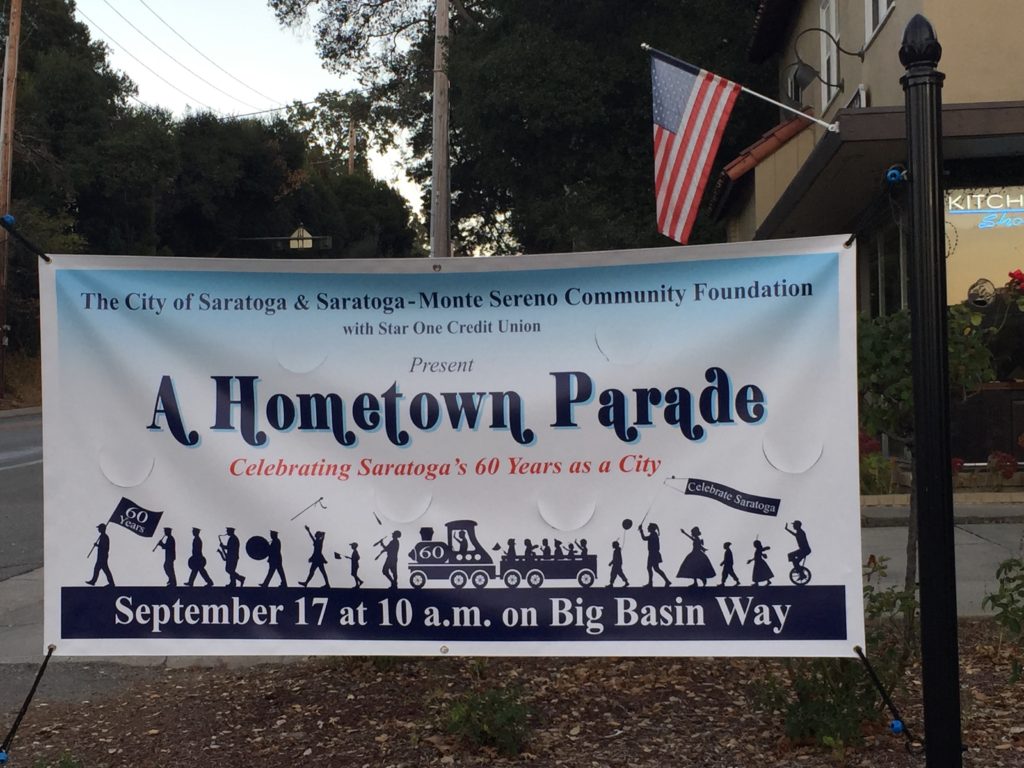
Saratoga, the beautiful village nestled in the gentle hills that rise from the Santa Clara Valley to meet the Santa Cruz mountains, enjoyed more than a century of pioneer adventurism and family farming before it got around to the business of incorporating as a city in 1956.
While the Anza exploring party passed through this area in 1776, it wasn’t until the 1840s that pioneers arrived to harvest timber in the mountains and began to settle. Quarrying, tanning, and mills for grain and lumber products were early enterprises that took advantage of the area’s abundant natural resources. These newcomers experimented with several names for this place — Toll Gate, McCartysville, and Bank Mills — before choosing Saratoga.
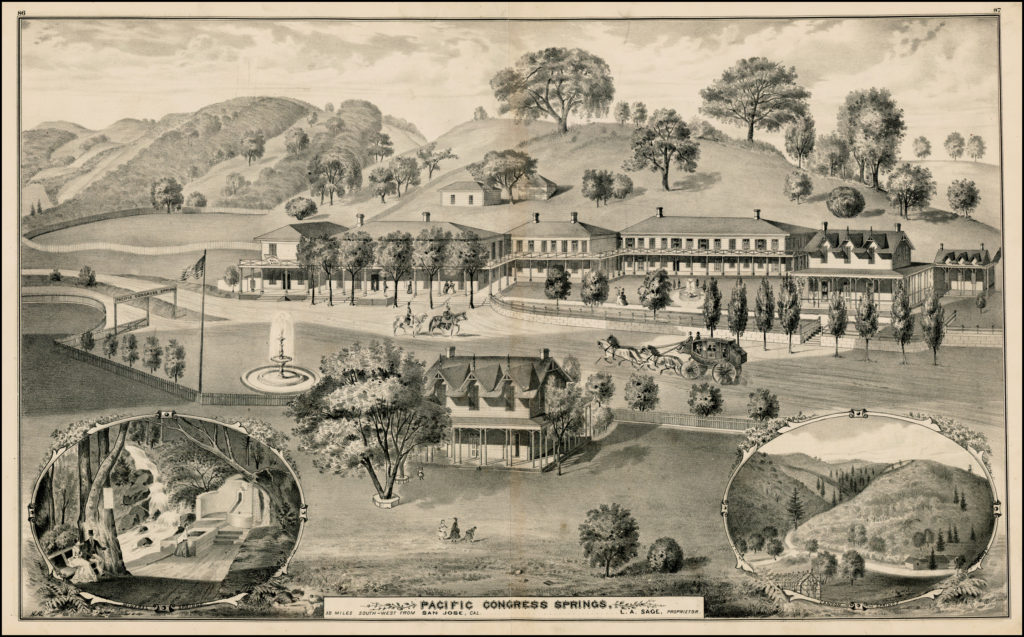
Not long after Saratoga’s village took shape, the hot spring waters in the mountains inspired creation of the Congress Springs Resort. Established in the 1860s, the resort quickly became a popular attraction. In the early 1900s, the establishment of the Peninsular Interurban rail line to Saratoga brought residents from as far as San Francisco seeking its healing waters, natural beauty, and relaxation.

The early pioneer era was followed by the growth of Saratoga’s most important heritage, orchard farming, and the birth of the fruit industry throughout the Santa Clara Valley. In 1900, after a disastrous drought ended, a local citizen (Rev. Edwin Sidney “Everlasting Sunshine” Williams) created the Saratoga Blossom Festival, which in a short time gained national recognition and was celebrated each year until WWII.
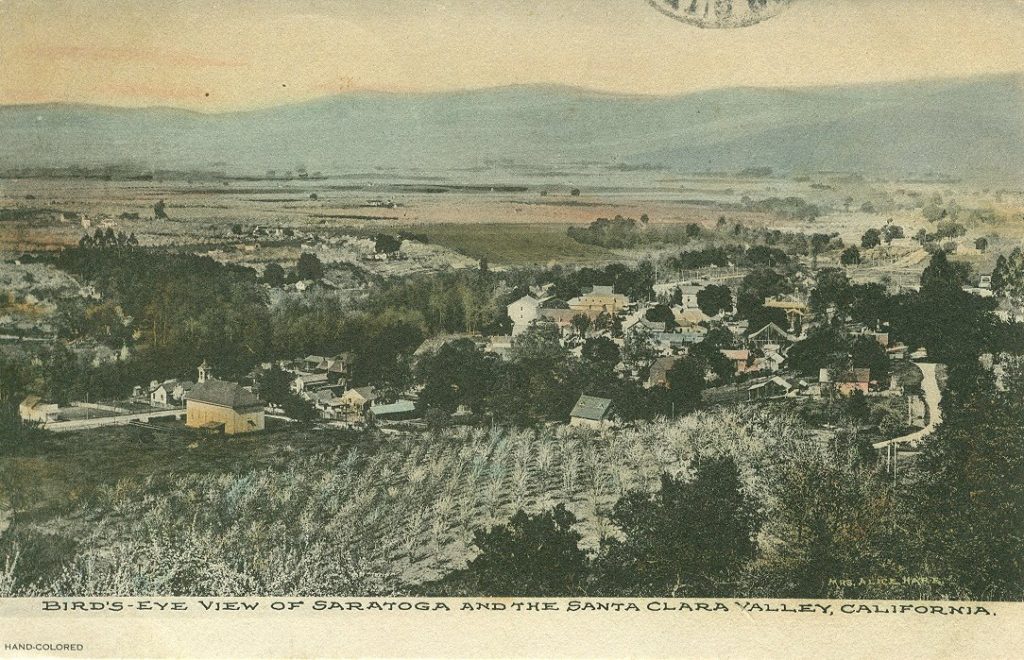
As Kathleen Norris, author and Saratoga resident wrote,
“Saratoga every March glorifies the high-tide of fruit blossoms that washes over her like a snowy foam. Every year the little town goes mad with the joy of spring, the perfume and sunshine and birds, and every year all the neighboring towns pour in to join the festival“.

Some of this history lives on in the memory of those lucky enough to have grown up here, when the orchards were an integral part of the community, and is well documented at the Saratoga Historical Foundation Museum. In a few scattered locations, the orchard traditions continue today in Santa Clara and San Benito counties, including at Novakovich Orchards on Fruitvale Avenue in Saratoga, and at City-owned Heritage Orchards in Saratoga, Sunnyvale, Los Altos and San Jose.
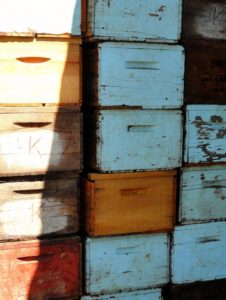
When the Saratoga IOOF lodge received word that the City of Saratoga planned to celebrate its 60th anniversary with a parade, they embraced the idea of creating a float that evoked the City’s orchard heritage. I hopped on board the planning committee, and the first stop was to ask our friends the Novakovich’s if we could borrow a flatbed trailer and some decorative elements from their orchard property. They were more than generous with fruit boxes, buckets and our choice from among several trailers.
A phone call to Garrod Farms secured as many hay bales as needed for the trailer and a trip to a local nursery to source fruit trees was just in time to purchase three trees still in leaf — a peach, plum and apricot. Next, a visit to the Saratoga Historical Foundation Museum and a conversation with Annette Stransky, President, resulted in photographs of several historic posters. These photos, printed onto large banners, expressed the theme of the “Valley of Heart’s Delight” and Saratoga’s role in that era beautifully. All told, planning and execution took a few weeks, lots of volunteer hands, and the IOOF committee was very proud of the result!
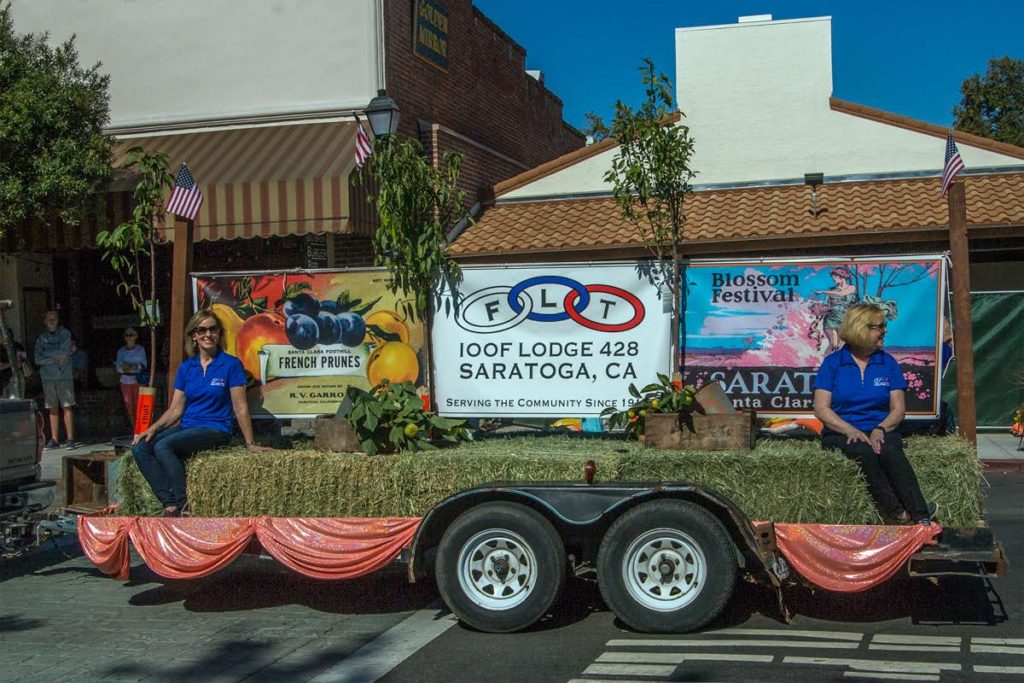
This was a first for me, to help plan, build, and sit on a float in my hometown parade! It was a lot of fun and everyone along the route seemed to enjoy the experience too. Afterward, I was invited to join Robin Chapman, author of California Apricots: Lost Orchards of the Silicon Valley, and another author of local history books at the Saratoga History Museum to talk about our books (and books-to-be), while local musicians played and Saratoga IOOF members provided free food and drinks.
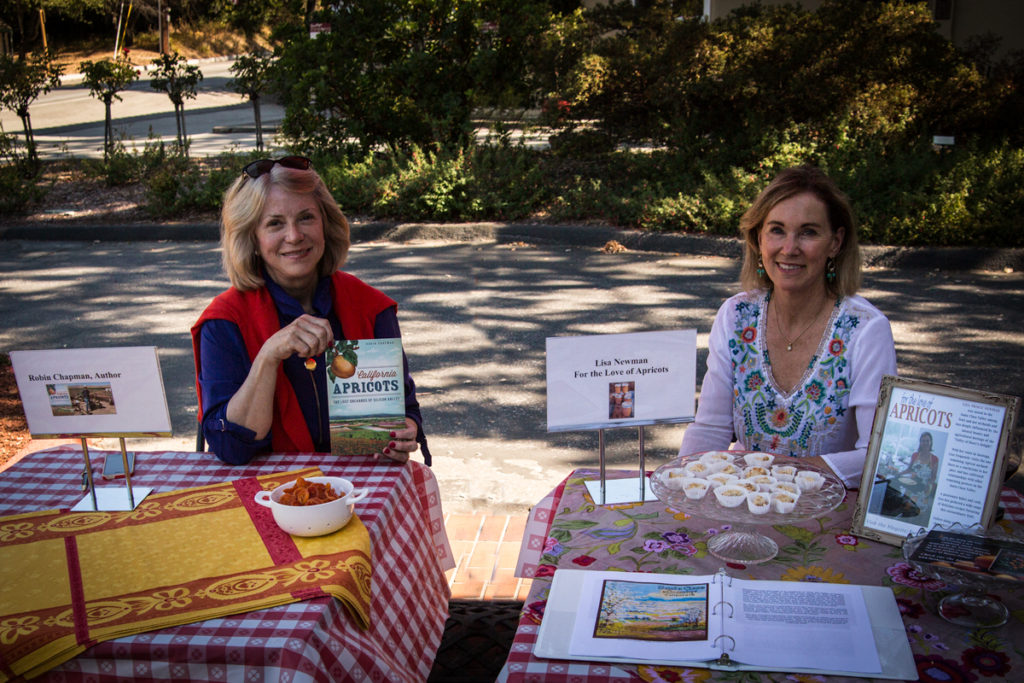
I enjoyed the opportunity to talk about apricots, recipes, the history of the Santa Clara Valley, and the art of publishing with Robin, who has several titles under her belt and is working on a new historical memoir. The Saratoga 60th Anniversary Parade gave me another opportunity to connect with old friends and memories in a new way that deepens my appreciation for the natural beauty of the area and the unparalleled quality of it’s fruit orchards.

Recently, my husband and I were invited to a combined Bar and Bat Mitzvah of a close friend’s son and his 93-year-old mother, whom I have known and admired for over 30 years. Her story of missing the opportunity to have her own Bat Mitzvah in 1930’s Germany due to the rising winds of war was so poignant, and her inspiration to share this celebration with her grandson so beautiful, that I knew a special treat was in order. The old world taste of a Linzer Torte with my own Apricot jam as the filling (which I know she loves) seemed like the right touch, and I was so gratified by the delight it brought to the family and their close friends!

[recipe print=”true”]
Linzer Torte with Apricot Jam Filling
The Linzer Torte originated in Vienna in the 1700’s, and its rich, tender marriage of almonds with a piquant fruit filling (traditionally Raspberry jam) is extraordinary! Making a Linzer Torte takes some extra care due to the tenderness of the dough, but the result is so delicious, it’s worth a little patience and practice. Expect the dough to crack or tear while forming it in the tart pan and lattice. If it gets too soft to handle, chill it in the refrigerator for 10 minutes and continue working.
| Yield: Serving Size: 8-10 | Prep Time: 2 hours |
|
Ingredients: For the Pastry:
For the Torte:
|
Directions: To Make the Pastry:
To Make the Torte:
|
[/recipe]


I am interested in obtaining your apricot cookbooks. I grew up in San Benito County cutting apricots, scraping trays & picking prunes.
Very nice Lisa – keeping your hometown history alive and vibrant. And you look beautiful on the float.
I’m glad I found this site , love your history and info . Since grade school our country school cook was a Hungarian, and my favorite on the menu was apricot pie I the big baking pans. Looking forward to 2017 in Saratoga, plus your cook book????????.
Awesome post!
Lisa, I look forward to each one of your posts! They are so interesting and informative. Looking forward to more blogs and to your cookbook!
Love this post Lisa – Such a great, rich history in that beautiful town. And you on the float!
Amazing wealth of history here, I loved seeing the float and learning more about Saratoga’s Blossom Festival! Would be great to connect local indigenous peoples’ history and hear how the native community interfaced with the pioneers and their bountiful orchards. Keep up the great work!